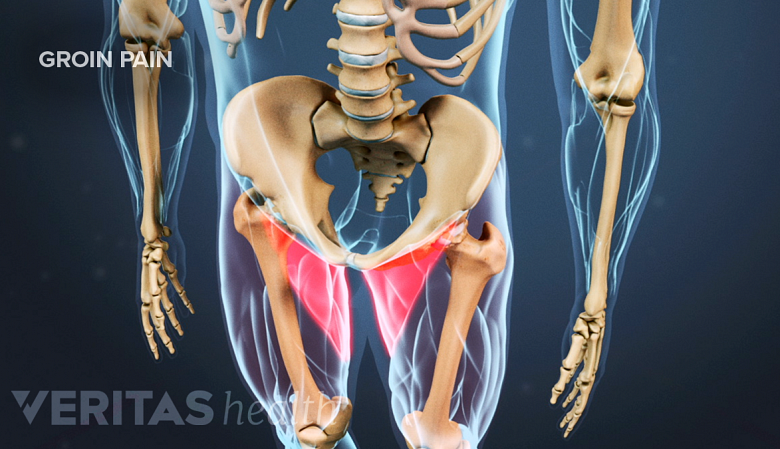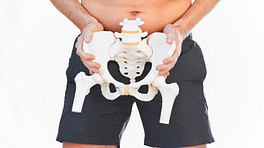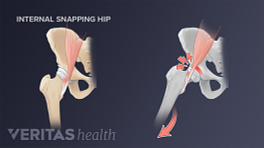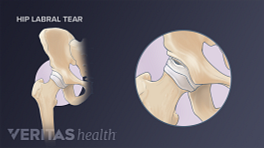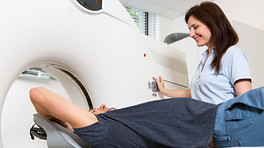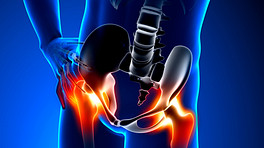There are several indicators that a groin injury has occurred, most notably pain in the upper thigh and/or lower abdominal area. However, groin pain is not the only symptom, and sometimes pain in the groin area is actually referred from an injury in another nearby part of the body.
A common symptom of a groin injury is pain in the groin area.
In This Article:
- Groin Strain and Injury
- Signs and Symptoms of Athletic Groin Injury
- Common Types of Groin Injury
- Athletic Groin Injury Causes and Risk Factors
- Groin Pain Diagnosis
- Groin Injury Treatments
The most common symptoms of groin injury include:
Groin pain. Pain in the groin may appear suddenly, such as when a muscle, ligament, tendon or labrum is torn during sports. It may also develop over time due to overuse of either soft tissues or bones in the groin and hip area. Depending on the type of injury and its severity, the pain may be a nuisance, severe and debilitating, or somewhere between these two extremes.
See Coping with Hip Labral Tears
Abdominal pain. Pain in the lower abdomen may be indicative of a groin injury. Some groin injuries that may cause either direct or referred abdominal pain include osteitis pubis and inguinal hernia. Coughing, sneezing, or straining during a bowel movement may worsen abdominal pain. 1 Read J. Pubic instability. Sports Medicine Imaging. 2013. http://www.sportsmedicineimaging.com/topics/pubic-instabilty/ . Accessed December 12, 2014.
Pain that subsides with rest. Some types of groin injuries, such as athletic pubalgia (more commonly known as a sports hernia) have pain symptoms that go away during rest periods but come back when the individual returns to playing sports. 2 Morelli M. Groin injuries in athletes. Am Fam Physician. 2001. Oct 15; 64 (8): 1405-1415. http://www.aafp.org/afp/2001/1015/p1405.html . Accessed December 5, 2014. Pain may worsen during any twisting movements, such as turning the body to receive a catch or while doing a “cutting stride” in soccer.
See Understanding Sports Hernia (Athletic Pubalgia)
Pain or tenderness at the touch or with deep muscle compression. Some types of groin injuries only cause pain and/or tenderness when the skin over the affected tissues is touched or pressed. Other times pain only appears when the athlete does certain types of exercises that place strain on the deep pelvic-floor muscles, such as half sit-ups (abdominal crunches). 2 Morelli M. Groin injuries in athletes. Am Fam Physician. 2001. Oct 15; 64 (8): 1405-1415. http://www.aafp.org/afp/2001/1015/p1405.html . Accessed December 5, 2014.
Swelling, discoloration, or stiffness. Swelling may develop in the groin, upper leg, or hip, depending on which tissue(s) is affected. Skin over the injury site may become red, bluish, black-and-blue, or black due to tearing of musculoskeletal tissue and surrounding blood vessels. Patients may have difficulty moving the hip or leg.
Joint disruption. Hip joint dislocations or subluxations are a rare but severe traumatic injury that occurs when the hip ball (head of the femur) comes out of the hip socket. The hips or upper legs may be visibly misaligned or shorter, and/or walking may be impossible. This injury requires immediate medical attention and transferring the athlete to the nearest emergency room.
Fever, nausea, or vomiting. Some groin injuries cause secondary symptoms such as joint or bone infections (osteomyelitis), 3 Goitz HT. Osteitis pubis: overview. Medscape. http://emedicine.medscape.com/article/87420-overview . Accessed December 5, 2014. strangulated intestines or other digestive disruptions, or otherwise compressed tissue that can result in either localized or systemic infections. Some of these secondary infections can be life-threatening, so anyone experiencing groin pain along with fever, nausea, or vomiting is strongly advised to seek immediate medical attention.
Pain in the genitals. Some types of musculoskeletal groin injuries can also affect one or more components of the reproductive system, especially in males. Pain in the scrotum is especially associated with inguinal hernia.
Athletes who experience one or more of the above symptoms are advised to consult with a qualified medical professional for evaluation and treatment.
- 1 Read J. Pubic instability. Sports Medicine Imaging. 2013. http://www.sportsmedicineimaging.com/topics/pubic-instabilty/ . Accessed December 12, 2014.
- 2 Morelli M. Groin injuries in athletes. Am Fam Physician. 2001. Oct 15; 64 (8): 1405-1415. http://www.aafp.org/afp/2001/1015/p1405.html . Accessed December 5, 2014.
- 3 Goitz HT. Osteitis pubis: overview. Medscape. http://emedicine.medscape.com/article/87420-overview . Accessed December 5, 2014.
